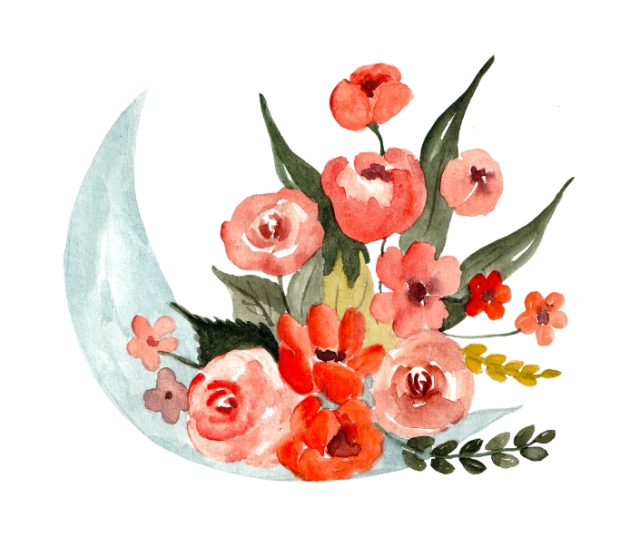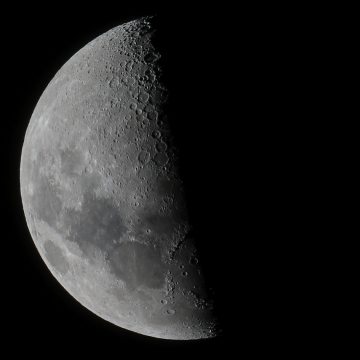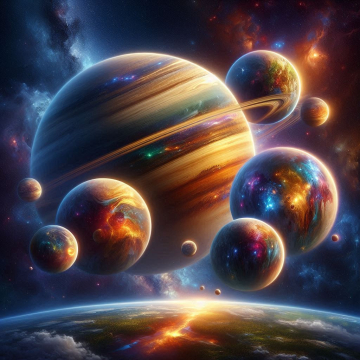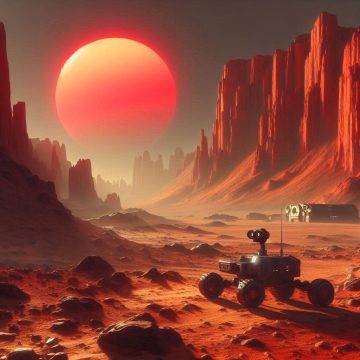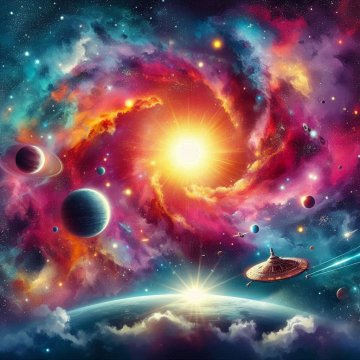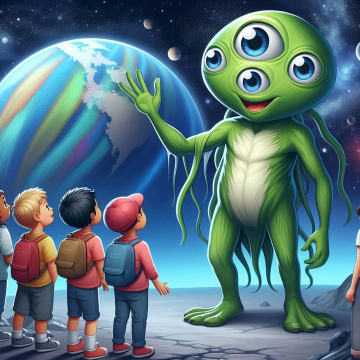The Moon , our bright natural satellite, has fascinated humanity since time immemorial. Its influence on Earth is undeniable, affecting the tides, regulating the cycle of the seasons and providing soft light on dark nights. But the Moon is much more than an astronomical object; It has also been a constant source of inspiration for artists of all disciplines throughout history.
The Moon in Painting and Sculpture
The visual representation of the Moon in art is as old as history itself. Ancient civilizations, such as the Egyptians and Sumerians, included images of the Moon in their paintings and sculptures. However, it was during the Renaissance that the Moon began to take on a more prominent role in the work of artists such as Leonardo da Vinci and Albrecht Dürer. These Renaissance masters explored the relationship between moonlight and shadow in their works, creating unique lighting effects that added depth and mystery to their paintings.
One of the most iconic paintings featuring the Moon is "The Starry Night" by Vincent van Gogh. This post-impressionist painting shows a night sky filled with stars and a crescent moon. The vivid depiction of the Moon in this work captures the artist's fascination with the cosmos and its influence on human mood and psychology.
Contemporary art has not been left out of the lunar influence either. Artists such as Ansel Adams, famous for his natural landscape photographs, have captured the beauty of the Moon in black and white images that highlight the texture and atmosphere of the satellite. Additionally, digital artists have found innovative ways to represent the Moon, creating abstract, three-dimensional images that explore the interaction between Earth and its celestial companion.
The Moon in Literature
The Moon has been a recurring motif in literature throughout the centuries. Poets and writers have used the Moon as a symbol of beauty, romance, mystery and loneliness. From Shakespeare's sonnets to Isaac Asimov's science fiction novels, the Moon has inspired countless works of literature.
In classical literature, the Moon has frequently been associated with night and love. In the play " Romeo and Juliet " by William Shakespeare , the protagonist Romeo declares: "She teaches the candles to burn brighter; so foolish is the face of the Moon, since, being gloomy, she is too cheerful." This metaphor of the Moon as an entity that influences human passions has endured throughout literary history.
The Moon has also been a recurring theme in science fiction, where it has been explored as a potential setting for human colonization. In the novel "From the Earth to the Moon" by Jules Verne, published in 1865, a group of adventurers plans a trip to the Moon in a giant projectile. This pioneering work in science fiction somewhat anticipated the eventual landing of Apollo 11 on the Moon in 1969.
The Moon in Music
The influence of the Moon on music is equally significant. From classical compositions to popular songs, the Moon has been a constant source of inspiration for composers and musicians of all genres.
In classical music, one of the most emblematic works related to the Moon is the "Piano Sonata No. 14 in C sharp minor 'Quasi una fantasia', Op. 27, No. 2", better known as the " Moonlight Sonata" by Ludwig van Beethoven. This piece is known for its melancholic and evocative tone, which has led to it being associated with the image of the Moon and the starry night.
On the other hand, in popular music, there is an abundance of songs that refer to the Moon. From Frank Sinatra's "Fly Me to the Moon" to Creedence Clearwater Revival's "Bad Moon Rising," the Moon has been a recurring theme in lyrics and melodies. These songs capture a wide range of emotions and themes, from love and hope to unease and mystery.
The Moon in Dance
Dance is another art form that has explored the relationship between the Moon and human expression. Contemporary dance, in particular, has used the Moon as a source of inspiration for choreography and visual performances.
In contemporary dance, the Moon is often represented through lighting and visual effects. Dancers can move under dim lighting that mimics moonlight, creating an ethereal and evocative atmosphere. Choreographies exploring the reduced gravity that would be experienced on the Moon have also been created, adding an element of fantasy and surrealism to the dance. Additionally, the Moon has been a recurring theme in folk and traditional dance of many cultures. From the Arabic Moon Dance to the dances of indigenous tribes that honor the Moon, this celestial element has played an important role in dance around the world.
The Moon in Science and Space Exploration
The Moon has not only inspired art, but has also been the subject of in-depth scientific study and exploration. In the 20th century, the Moon became a major target of space exploration, and NASA 's Apollo 11 mission in 1969 marked a significant milestone in human history by landing the first astronauts on the Moon.
The images and data collected during the Apollo missions have enriched scientific understanding of the Moon, its geology, and its history. Artists, in turn, have used these images to create more accurate and detailed representations of the Moon in their works.
The Moon and Art Today
In the contemporary era, the Moon remains an inexhaustible source of inspiration for artists of all disciplines. Modern technology has allowed for deeper and more detailed exploration of the Moon , which has influenced artistic representations of our satellite. Photography of the Moon taken by space telescopes and robotic probes has provided artists with a unique view of the lunar surface and its geological features.
In the digital age, the Moon has found a prominent place in pop culture and social media. Moon-related hashtags, such as #FullMoon or #SuperLuna, trend on social media platforms during special astronomical events, and people share their own photos of the Moon with special filters and effects.
Its influence on human creativity is a reminder of the wonder and beauty of the cosmos around us. The Moon, with its eternal glow in the night sky, will continue to be a source of inspiration for generations of artists and science lovers to come, connecting art with the mystery and majesty of the universe.
